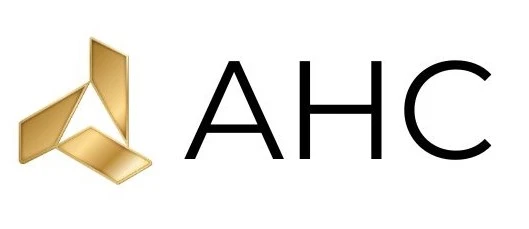Chiropractic Acupuncture Massage Therapy Physiotherapy DIRECT BILLING CALL NOW 306-954-4242 Orthotics Compression Stockings Orthopedic Bracing Chiropractic Acupuncture Massage Therapy Physiotherapy DIRECT BILLING CALL NOW 306-954-4242 Orthotics Compression Stockings Orthopedic Bracing
Chiropractic Acupuncture Massage Therapy Physiotherapy DIRECT BILLING CALL NOW 306-954-4242 Orthotics Compression Stockings Orthopedic Bracing Chiropractic Acupuncture Massage Therapy Physiotherapy DIRECT BILLING CALL NOW 306-954-4242 Orthotics Compression Stockings Orthopedic Bracing
Physiotherapy For Rotator Cuff Injuries And Other Shoulder Conditions

Understanding the Shoulder and Rotator Cuff
The shoulder is a ball-and-socket joint formed by the upper arm bone (humerus) and the socket of the shoulder blade (glenoid cavity of the scapula). It is supported by a network of ligaments, tendons, and muscles that provide stability and enable a wide range of motion.
- Supraspinatus: Initiates arm abduction (lifting the arm away from the body) and assists in raising the arm.
- Infraspinatus: Responsible for external shoulder rotation, helping to stabilize the humeral head within the joint.
- Teres minor: Works with the infraspinatus to externally rotate the shoulder and provide stability.
- Subscapularis: The only rotator cuff muscle located on the front of the shoulder, it enables internal rotation of the arm and contributes to joint stability.
These muscles’ tendons attach to the humeral head, forming a cuff-like structure that keeps the joint centered and allows for smooth movements.
Causes of Rotator Cuff Injuries and Shoulder Pain
Rotator cuff injuries and shoulder conditions can stem from various causes:
- Overuse and repetitive motion: Activities involving repetitive overhead motions, like throwing, swimming, or painting, can strain the rotator cuff tendons, leading to inflammation or tears.
- Traumatic injury: Falls, direct blows, or accidents can cause acute rotator cuff injuries, such as tears or dislocations.
- Degenerative changes: Aging can cause wear and tear on the rotator cuff tendons, increasing the risk of injury.
- Poor posture and muscle imbalances: Slouching or poor posture can contribute to muscle imbalances, placing excessive stress on the rotator cuff muscles and increasing injury risk.
- Impingement syndrome: Occurs when the space between the rotator cuff tendons and the shoulder bones narrows, causing tendons to rub against the bone, leading to pain and inflammation.
Types of Rotator Cuff Injuries
Rotator cuff injuries can vary in type and severity:
- Rotator cuff tears: These can be partial or complete and involve the disruption of one or more tendons. Tears can result from acute injuries or degenerative changes and cause pain, weakness, and limited motion.
- Rotator cuff tendinitis: Inflammation of the rotator cuff tendons, often caused by repetitive overhead motions, leading to pain and swelling.
- Subacromial bursitis: Inflammation of the bursa (a fluid-filled sac) between the rotator cuff tendons and the acromion, often due to repetitive motion or impingement, causing pain and limited mobility.
The severity of these injuries determines the appropriate treatment, which may include rehabilitation exercises, medication, physical therapy, or surgery.
Preparing for Physiotherapy and Chiropractic
Before starting a rehabilitation exercise program for a rotator cuff injury or shoulder condition, it is essential to undergo an assessment by a healthcare professional, such as a chiropractor, orthopedic specialist, or physiotherapist. This evaluation will help diagnose the injury, identify its causes, and establish a baseline for your condition, enabling the development of a personalized exercise program.
Importance of Rest and Pain Management
Rest and pain management are crucial in the early stages of rehabilitation. Allowing the injured tissues to heal and reducing inflammation is essential before starting exercises. Resting the shoulder and avoiding activities that aggravate the pain can prevent further damage and promote recovery. Pain management techniques, such as ice packs, over-the-counter anti-inflammatory medications (under a healthcare professional’s guidance), or prescribed pain relievers, may be recommended to reduce pain and inflammation. It’s important to follow these guidelines to reduce the chance of chronic pain and fibromyalgia.
Collaboration with a Physical Therapist
Working with a physical therapist or rehabilitation specialist is highly beneficial for preparing for rehabilitation exercises. These professionals can design customized exercise programs tailored to your specific needs, ensuring optimal recovery and minimizing the risk of re-injury. They will guide you through the rehabilitation process, providing hands-on supervision to ensure proper form and technique during exercises, assess your progress, and modify the program as needed.
Phase I: Early Rehabilitation
The early rehabilitation phase focuses on gentle range-of-motion exercises, strengthening exercises for surrounding muscles, and pain management. This phase aims to reduce pain, improve flexibility, and lay the foundation for subsequent rehabilitation phases.
Gentle Range-of-Motion Exercises
During the early rehabilitation phase, gentle range-of-motion exercises are introduced to restore flexibility and mobility to the shoulder joint. These exercises include:
- Pendulum swings: Lean forward and let your injured arm hang freely, gently swinging it in small circles.
- Wand exercises: Hold a wand with both hands and slowly raise it overhead, maintaining a pain-free range of motion.
- Finger wall walks: Walk your fingers up and down a wall, maintaining a pain-free range of motion.
These exercises should be performed within a pain-free range, with gradual progression as tolerated.
Strengthening Exercises
Early rehabilitation also involves strengthening the muscles surrounding the shoulder joint to provide support and stability. Examples include:
- Isometric exercises: Gentle isometric contractions against a stationary object, such as a wall.
- Scapular squeezes: Squeezing the shoulder blades together to strengthen the muscles between the shoulders.
- Theraband exercises: Using a resistance band for external and internal shoulder rotations.
Pain Management Techniques
Managing pain is essential during this phase, with techniques including:
- Ice therapy: Applying an ice pack to reduce inflammation and alleviate pain.
- Heat therapy: Using a heating pad or warm towel to relax muscles and improve blood flow.
- Over-the-counter pain medications: NSAIDs or other medications as directed by a healthcare professional.
Phase II: Intermediate Rehabilitation
Intermediate rehabilitation focuses on gradually progressing range-of-motion exercises, specific rotator cuff strengthening exercises, and introducing resistance training to enhance shoulder stability.
Gradual Progression of Range-of-Motion Exercises
Range-of-motion exercises continue in Phase II, with increased intensity and range. Examples include:
- Wall slides: Sliding arms up and down a wall to improve shoulder mobility.
- Codman’s pendulum exercises: Swinging the injured arm in larger circles.
- Crossover arm stretch: Stretching the injured arm across the chest.
Specific Rotator Cuff Strengthening Exercises
Phase II introduces exercises targeting the rotator cuff muscles, such as:
- External rotation with resistance band: Rotating the forearm outward against the resistance of a band.
- Internal rotation with resistance band: Rotating the forearm inward against the resistance of a band.
Introduction of Resistance Training
Resistance training exercises, such as dumbbell shoulder presses and cable external rotations, are introduced to enhance shoulder stability and strength.
Phase III: Advanced Rehabilitation
The advanced rehabilitation phase focuses on advanced strengthening exercises for the rotator cuff, functional exercises for shoulder stability and coordination, and sports-specific or occupation-specific exercises.
Advanced Strengthening Exercises
Advanced exercises in Phase III target the rotator cuff muscles more intensely, such as:
- Resistance band internal and external rotation: Challenging the rotator cuff muscles with increased resistance.
- Prone horizontal abduction: Lifting the arms off the ground while lying face down to strengthen the shoulder.
Functional Exercises
Functional exercises mimic real-life movements to improve shoulder stability and coordination. Examples include:
- Push-ups: Modified or full push-ups to strengthen the shoulder and upper body.
- Plank variations: Plank exercises to challenge shoulder stability and core strength.
- Medicine ball throws: Exercises involving throwing and catching motions to enhance coordination.
Sports-Specific or Occupation-Specific Rehabilitation
In Phase III, individuals can incorporate exercises that mimic the demands of their chosen activities or work tasks, such as tennis-specific drills or occupational rehabilitation exercises.
Rehabilitation Techniques and Considerations
Rehabilitation techniques and considerations are pivotal in optimizing shoulder recovery and function. In Phase III of rehabilitation, advanced techniques such as manual therapy, stretching exercises, and neuromuscular training play crucial roles in enhancing shoulder mobility, relieving pain, and improving overall control.
Manual Therapy Techniques for Pain Relief and Improved Mobility
Manual therapy, performed by trained professionals like physical therapists or chiropractors, can provide significant benefits for shoulder pain management. Techniques include:
- Soft Tissue Mobilization: This involves applying controlled pressure and manipulation to the soft tissues around the shoulder, including muscles, tendons, and ligaments. It aims to reduce muscle tension, improve circulation, and facilitate tissue healing.
- Joint Mobilization & Adjustments: Gentle movements of the shoulder joint through its range of motion can enhance mobility, reduce pain, and restore normal joint mechanics.
- Myofascial Release: This technique applies sustained pressure to release restrictions in the fascia, the connective tissue around the muscles, which can alleviate tightness and improve shoulder function.
These techniques can be particularly effective when combined with physiotherapy for shoulder pain and exercise programs.
Stretching Exercises for Improved Flexibility and Range of Motion
Incorporating stretching exercises is vital for improving shoulder flexibility, range of motion, and preventing muscle imbalances. Effective stretches include:
- Doorway Stretch: Stand in a doorway with your forearm against the door frame at a 90-degree angle. Lean forward gently to stretch the front of your shoulder. Hold for 20-30 seconds and repeat on the other side.
- Sleeper Stretch: Lie on your side with your affected shoulder facing up. Bend your elbow at a 90-degree angle and gently press the back of your hand towards the bed or floor. Hold for 20-30 seconds and repeat on the other side.
- Cross-Body Stretch: Use your unaffected arm to gently pull your injured arm across your chest until you feel a stretch in the shoulder. Hold for 20-30 seconds and repeat on the other side.
These stretches should be performed gradually and within a comfortable range to avoid injury.
Neuromuscular Training and Proprioception Exercises for Enhanced Shoulder Control
Neuromuscular training and proprioception exercises are crucial for improving shoulder control, stability, and coordination:
- Balance Exercises: Challenge your balance by standing on one leg or using unstable surfaces. These exercises engage the shoulder muscles, promoting stability and control.
- Proprioceptive Exercises: Improve your sense of joint position with exercises like shoulder circles or tracing patterns in the air with your injured arm.
- Scapular Stability Exercises: Target scapular control with exercises such as scapular retractions, shrugs, or rows to enhance shoulder mechanics.
Perform these exercises with proper form and technique, starting with simpler movements and progressing as your shoulder control improves.
Rehabilitation techniques and considerations are pivotal in optimizing shoulder recovery and function. In Phase III of rehabilitation, advanced techniques such as manual therapy, stretching exercises, and neuromuscular training play crucial roles in enhancing shoulder mobility, relieving pain, and improving overall control.
Manual Therapy Techniques for Pain Relief and Improved Mobility
Manual therapy, performed by trained professionals like physical therapists or chiropractors, can provide significant benefits for shoulder pain management. Techniques include:
- Soft Tissue Mobilization: This involves applying controlled pressure and manipulation to the soft tissues around the shoulder, including muscles, tendons, and ligaments. It aims to reduce muscle tension, improve circulation, and facilitate tissue healing.
- Joint Mobilization: Gentle movements of the shoulder joint through its range of motion can enhance mobility, reduce pain, and restore normal joint mechanics.
- Myofascial Release: This technique applies sustained pressure to release restrictions in the fascia, the connective tissue around the muscles, which can alleviate tightness and improve shoulder function.
These techniques can be particularly effective when combined with physiotherapy for shoulder pain and exercise programs.
Conclusion
At Axis Health Center, physiotherapy exercises and chiropractic care play a crucial role in recovering from and preventing rotator cuff injuries and other shoulder conditions. By following a structured program, individuals can restore strength, flexibility, and stability to the shoulder, improving overall function and reducing pain. Always consult with a healthcare professional or physical.

